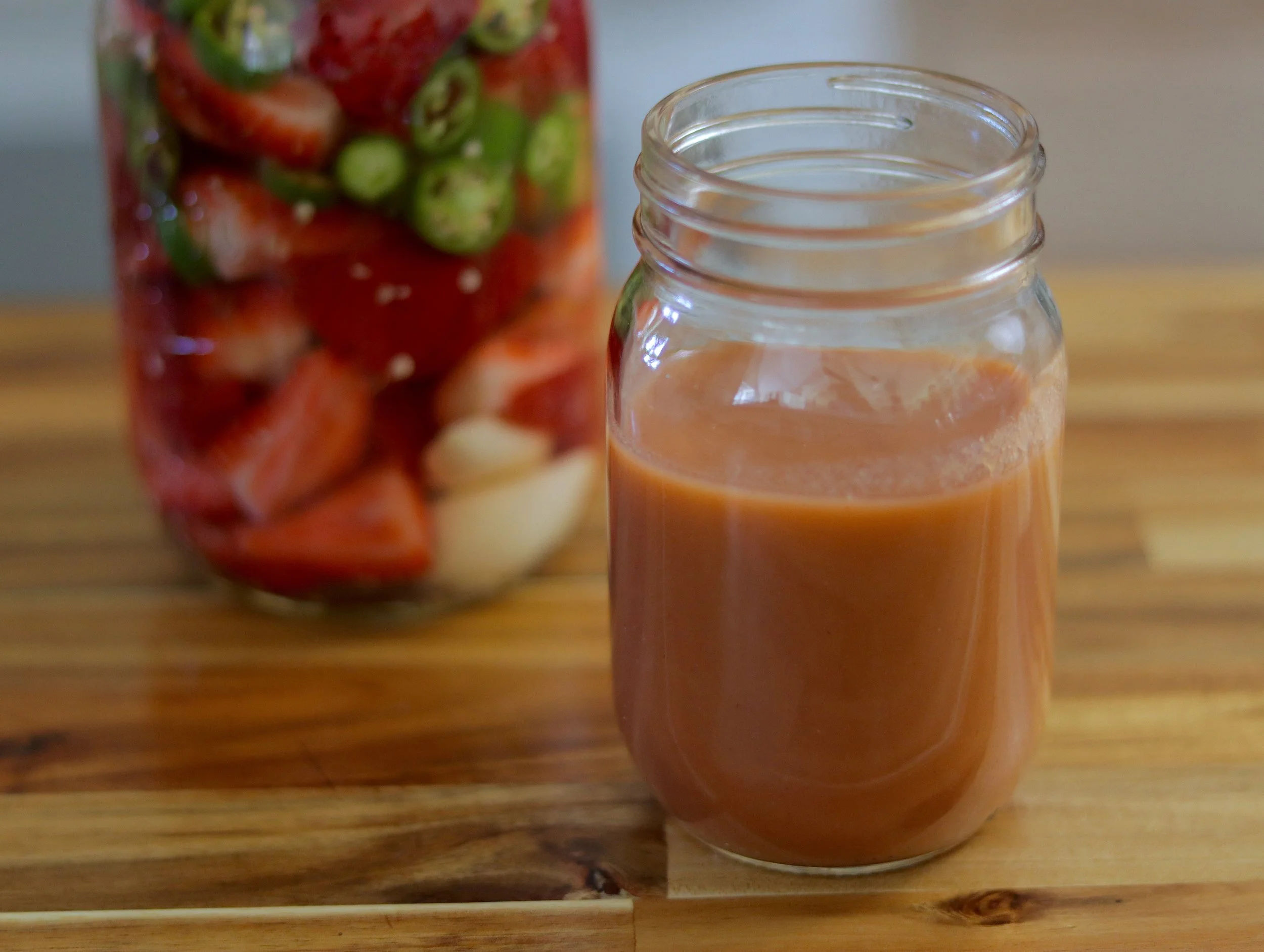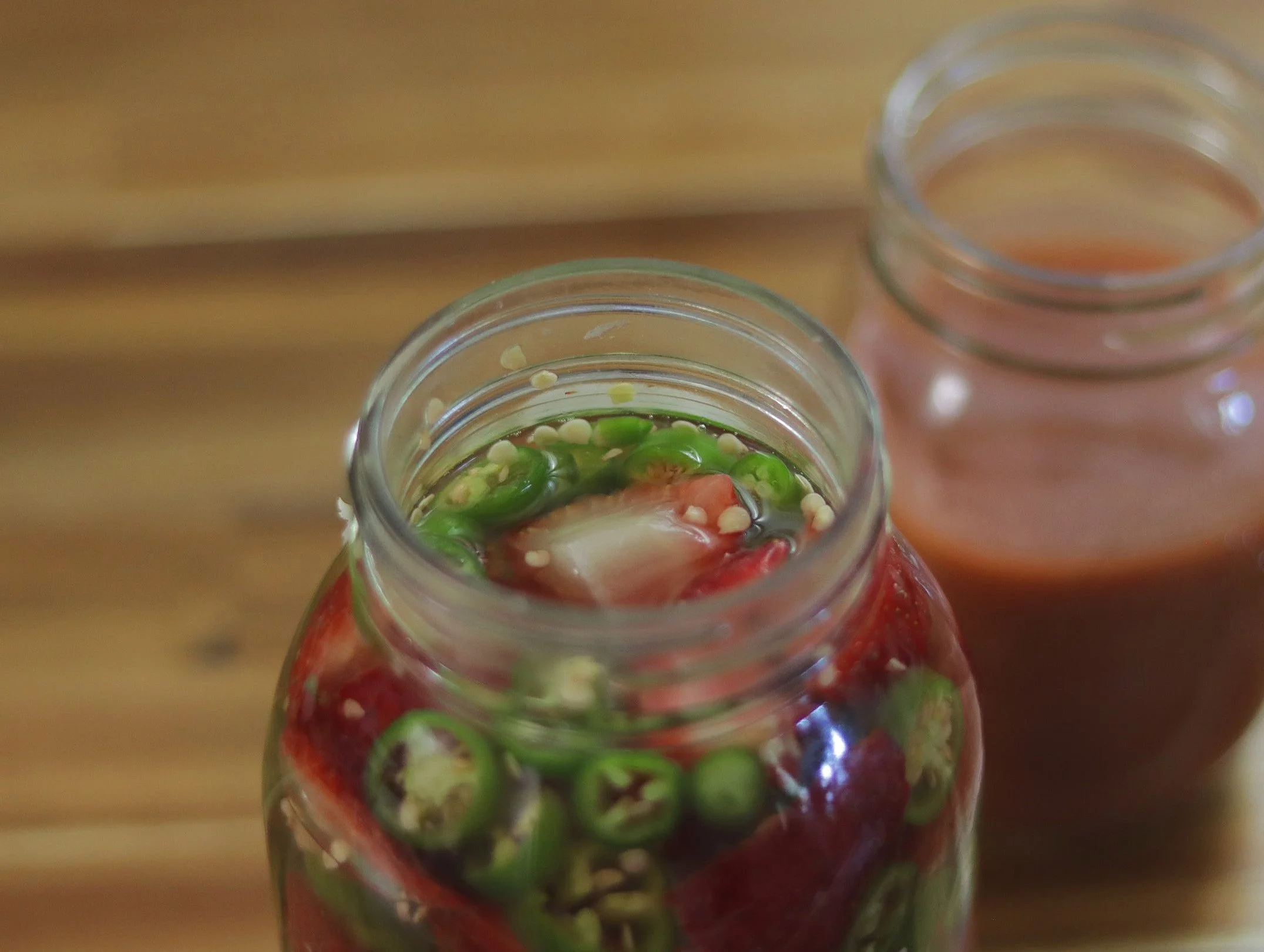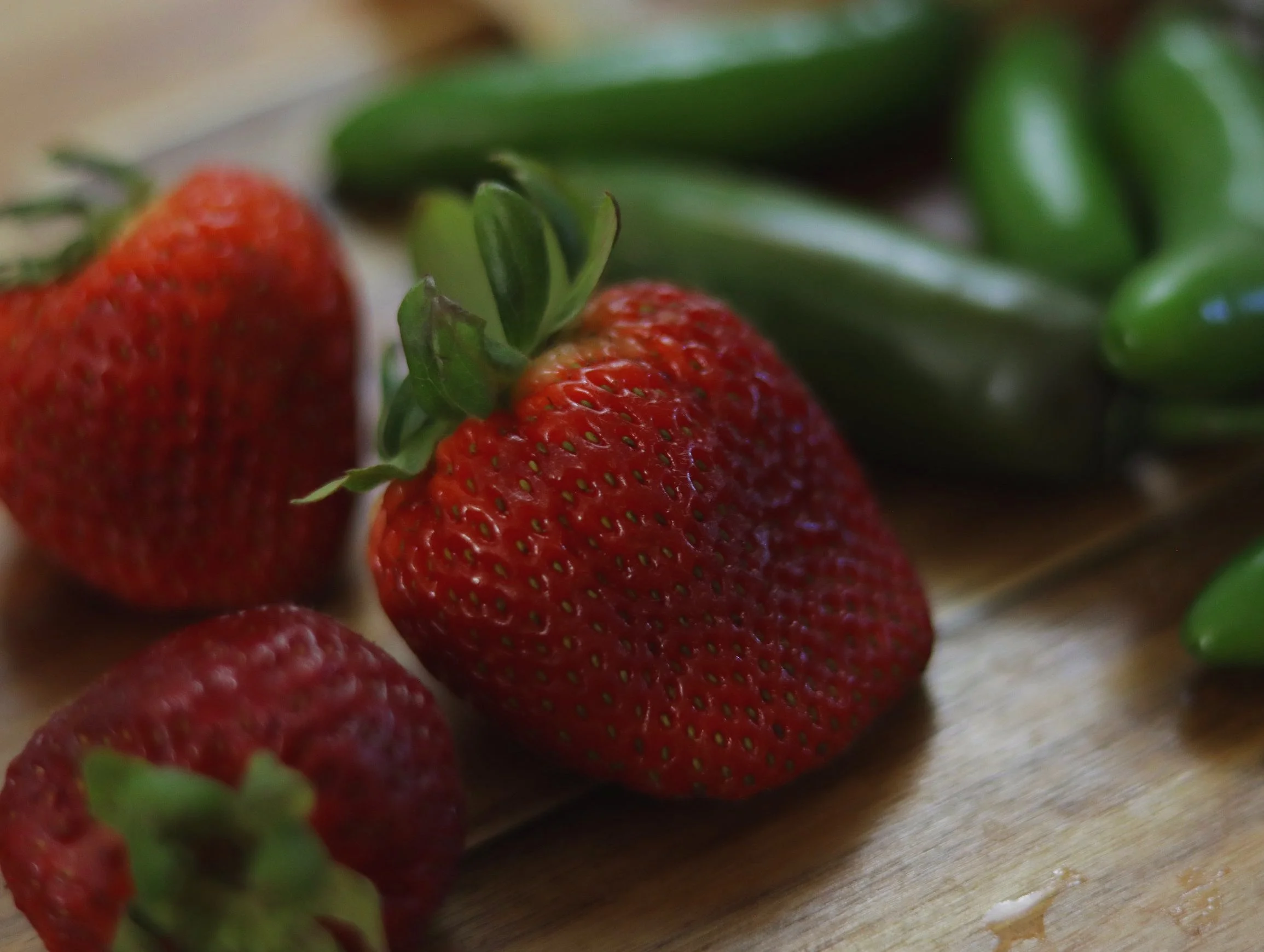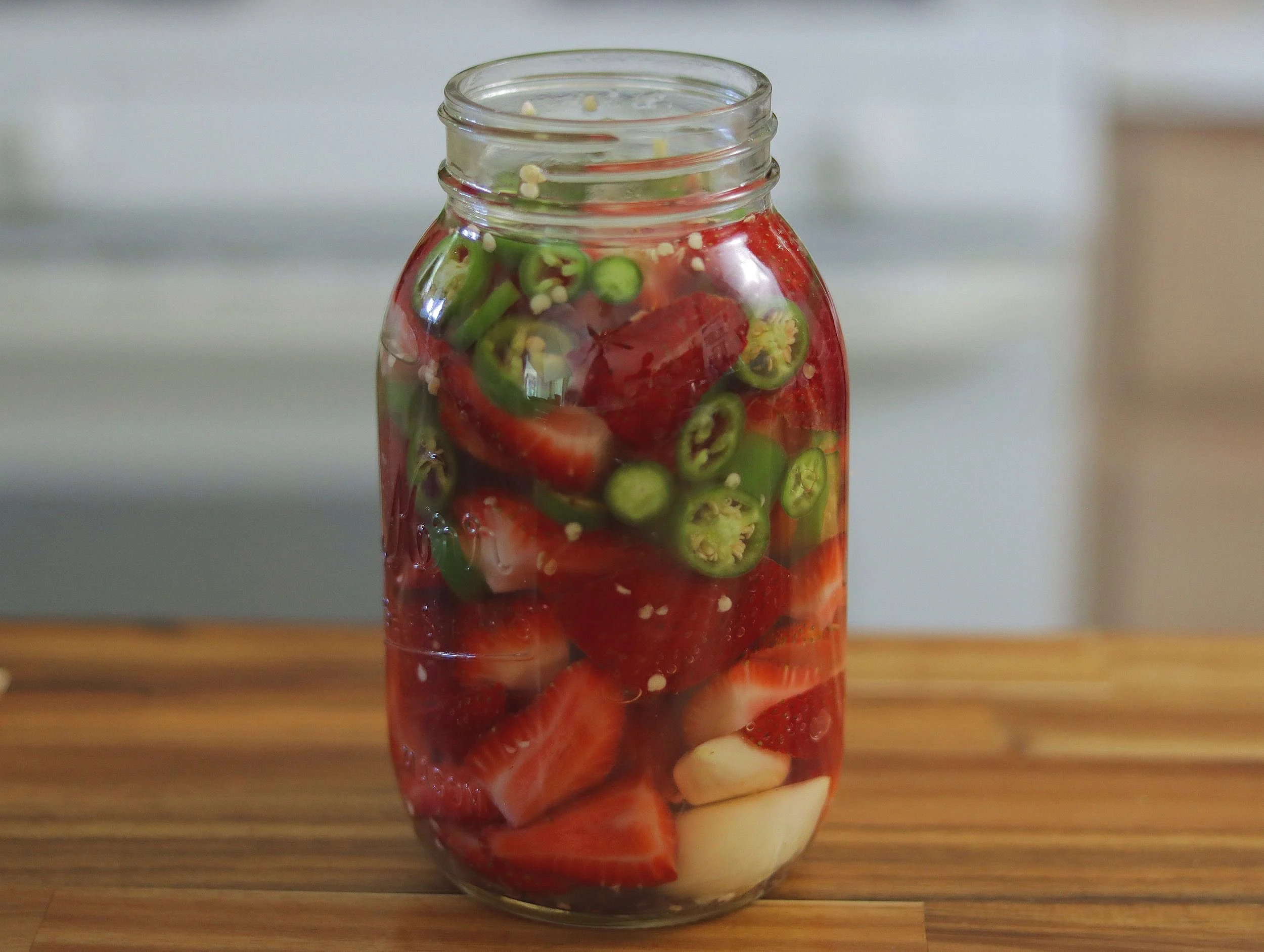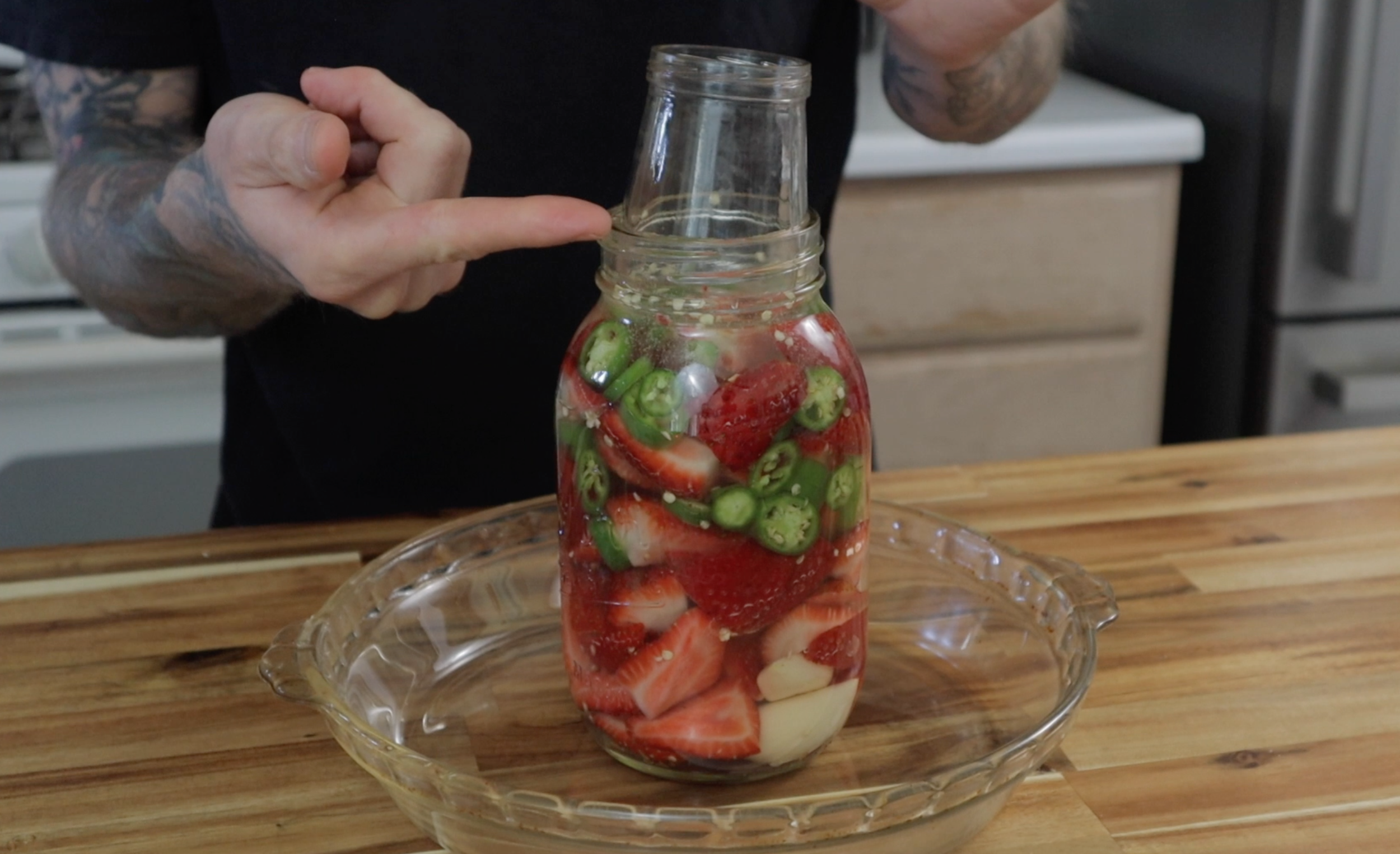Strawberry Hot Sauce Recipe | The AMAZING Power Of Lacto Fermentation
Day 1 of the fermentation process.
Ingredients:
15 large strawberries
5 serrano peppers
2 cloves garlic you can go with 4
1 tsp cumin seeds (anise seeds are also great)
5 peppercorns - optional and not shown in the video
3% brine
Tools needed:
Mason jar
***The following link is an amazon associate link. As an Amazon Associate I earn from qualifying purchases, I make a small commission if purchased at not extra cost to you
Digital scale that reads in grams
Cutting board
Sharp knife
Mixing bowl
Wire whisk
How to make it:
Clean the peppers and strawberries under cold running water, let air dry.
Remove outer paper layer from the garlic, cut off root end.
Cut ends off the strawberries, quarter or half depending on size. They need to be all around the same size.
Cut ends off peppers, slice into 1/2 inch thick slices. I keep the seeds, you can remove if desired. Make sure the peppers are fresh inside.
Place empty mason jar on scale. Set to read grams, zero the scale.
Add the strawberries, garlic, peppers, anise seeds and peppercorns to the jar. Fill jar with filtered water to the bottom of the neck of the jar. Record that weight and multiply it be 3%. This will be the amount of fine sea salt needed to make the brine.
Ex: 870 g x .03 = 26.1 g needed for the salt. If your scale doesn’t read decimal points, round to the nearest whole number.
Place empty mixing bowl on the scale, zero out. Add the calculated amount of salt to the bowl. Pour the water from the jar into the bowl, using a mason jar lid to hold the ingredients back. Whisk the salt into the water to dissolve thoroughly. Add the newly made brine back to the jar with the strawberries and the peppers.
Place a fermentation weight into the jar, I like to use and empty baby food jar that is glass. A plastic ziplock bak filled with water is fine to use as well, though this is not my preferred weight to use.
Let ferment on the counter top or a place in your pantry. Somewhere that is away from direct sunlight. This needs to be left out in a temperature range from 68-75 degrees F for best results. I let this ferment for 4 weeks. You can ferment yours for 2 weeks with good results or even up to 3 months for a really “funky” fermented hot sauce.
Kahm yeast or pellicle as some call it may for on the top of the brine as this ferments. It’s perfectly fine and you can continue to ferment. I skim it off just before I make the sauce as I don’t like the taste.
Once fermented, strain the solids reserving the brine. Place the solids in a blender and add enough brine to cover the ingredients by half. You can add more or less depending on the consistency of the sauce you want. Blend for 30 seconds to completely break down the ingredients and puree.
I like to strain sauces through a fine mesh strainer. Reserve the pulp to dry it out, grind it and add some salt to it for a homemade seasoned salt. Or you can use it as a marinade.
The hot sauce stays good in the refrigerator for months. Since there's no stabilizers in this sauce, it will most likely separate while it sits in the refrigerator. Give the jar a good shake before using. Goes great on chicken wings, as a base for a vinaigrette, on eggs…everything you like hot sauces on.
Enjoy!
Logan
